LBJ Cronies D.H. Byrd and James Ling Bought 132,000 Shares of Stock in Defense Contractor LTV in November 1963 Around Time of the JFK Assassination
Documents accessible at Library of Congress confirm purchase
David Harold Byrd [Source: wikispooks.com]
Dear reader, This article is timed for the 61st anniversary of the assassination of John F. Kennedy. It should be read in conjunction with an article that I wrote detailing Lyndon B. Johnson’s role in the JFK assassination.
Originally published at CovertAction Magazine.
In November 1963, the month of JFK’s assassination, two of Lyndon B. Johnson’s closest friends, David H. Byrd and James Ling, bought 132,000 shares of Ling-Temco-Vought (LTV) stock at approximately $16 per share through the Alpha Omega Corporation investment vehicle.
Byrd already owned 19,948 shares of LTV stock at this time, and his wife Mattie owned another 15,796 shares, which were collectively worth about $571,904. As a founder of one of the companies that merged to become LTV, Ling also (like Byrd) owned thousands of shares before the November 1963 purchase.
Housing plants in Dallas, Garland and Greenville, Texas, LTV was a defense contractor that made Corsair airplanes for the U.S. Navy and, according to Byrd, became a “formidable presence in the aerospace industry” after it absorbed the Chance Vought Corporation.[1]
By 1967, in the middle of the Vietnam War, LTV stock rose to a whopping $169 per share and had a total value of $22,308,000 (which in 2024 dollars would be equal to approximately $207.3 million).
David Byrd and his wife thus made an absolute fortune, both from the Alpha-Omega investment vehicle purchases and from 35,744 shares of LTV stock they owned separately from Alpha Omega.
LTV’s stock was boosted by President Lyndon B. Johnson’s granting a large defense contract to LTV in February 1964 to build the A-7 Corsair II, a light attack aircraft equipped with auto-cannon and MK-82 bombs, which was used extensively in the Vietnam War.[2]

Confirmation of Byrd and Ling’s stock purchases—discussed in Peter Dale Scott’s 1971 manuscript The Dallas Conspiracy and 1996 book, Deep Politics and the Death of JFK—is found in the 1964 Value Line Investment Survey, which is accessible at the Library of Congress.

The stock purchases are significant in pointing to the likely involvement of Ling and Byrd in the JFK assassination conspiracy. It shows they were ready to profit from JFK’s death and may have known about it in advance.
The buys occurred at a time when LTV stock was heading downward in the face of antitrust litigation.[3] Furthermore, Defense Secretary Robert McNamara said to brace for cuts in the defense industry and the business press was writing bearish articles on the prospects for defense stocks as the year 1963 was coming to a close.
On October 7, 1963, Newsweek published an article titled “What Can Industry Do As Pentagon Cuts Back?” By August 2, 1965, Newsweek published an article called “War’s Widening Ripples” and wrote that “the shock waves from the escalated war in Vietnam were spreading through U.S. business last week.”
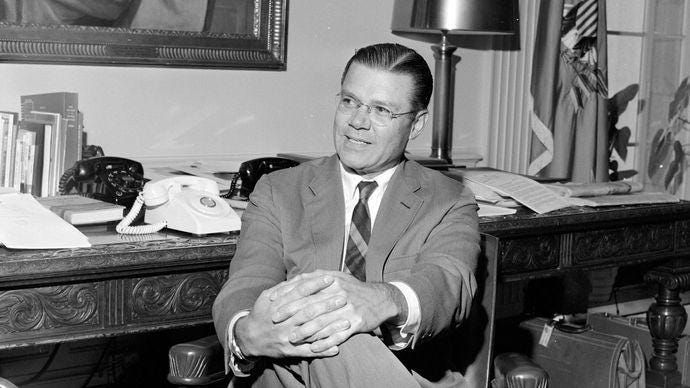
Byrd was the owner of the Texas School Book Depository (TSBD) building on a corner of Dealey Plaza in downtown Dallas from which Lee Harvey Oswald is alleged to have shot JFK.

The TSBD company was owned by Jack Cason, head of a Dallas post of the right-wing American Legion and a friend of J. Edgar Hoover.
The TBSD distributed textbooks to schools in Dallas. It appears to have functioned as an intelligence front, which covertly shipped military and intelligence-related items in book cartons.[4]

Elzie Glaze, a reporter for the Austin American-Statesman, researched and interviewed Bill Shelly, Oswald’s supervisor, and noted, “Mr. Shelly claims to have been an intelligence officer during World War II and thereafter joined the CIA.”[5]
Oswald was himself an undercover intelligence agent who had covertly infiltrated the left-wing Fair Play for Cuba Committee as part of an operation to provide him with a cover that made it possible to blame the Kennedy assassination on a left-wing communist.
Evidence indicates that Oswald could not actually have been one of the snipers as he was seen by two witnesses (police officer Marrion Baker and TSBD superintendent Roy Truly) calmly drinking a coke on the second floor of the TSBD two minutes after the assassination—which would have been impossible if he had shot JFK from the sixth floor.
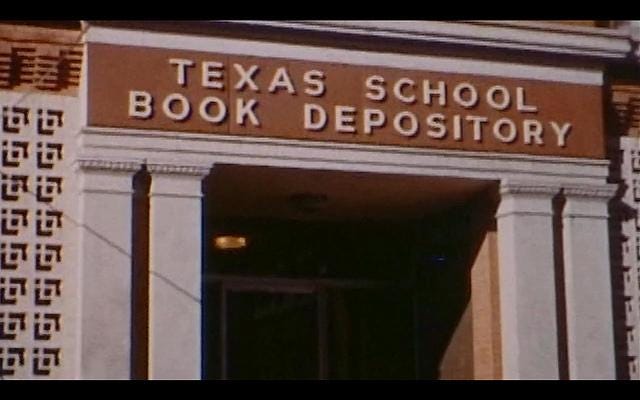
Also, Oswald received at best average grades for marksmanship in the military—when the sniper would have had to have been a top expert to have hit Kennedy from the TSBD 6th floor. Further, evidence indicates that Kennedy was shot from the front from the grassy knoll, and that there were more bullets than Oswald is alleged to have shot from the TSBD.
For years after the JFK assassination, Byrd kept a replica of the sniper’s nest from the TSBD in his mansion as a souvenir/trophy.
Byrd had been essential to the JFK assassination plot as the one who helped enable Oswald’s hiring and owned the building used in the plot.
Afterwards, to prevent critical scrutiny into his actions, Byrd created a fake alibi that he was in Mozambique on a hunting safari at the time of JFK’s assassination.[6]
Byrd was such a close friend of LBJ—the primary beneficiary of the JFK assassination who had a raging hatred for the Kennedys—that Johnson allowed him to land his plane at the LBJ ranch any time he wanted.[7]
Byrd was also very close with Clint Murchison, Sr., a wealthy Texas oilman connected to organized crime, Curtis LeMay, a right-wing militarist who hated the Kennedys, and Malcolm “Mac” Wallace, one of LBJ’s alleged hatchet men who worked for Byrd at LTV after he avoided jail time on a murder charge.[8]
Byrd, additionally, had employed George de Mohrenschildt, a CIA operative who served as Oswald’s handler.
A cousin of Governor and then Senator Harry F. Byrd (D-VA), who was described as “the leader of conservative opinion in the U.S.,”[9] David Byrd was born on April 24, 1900, in Detroit, Texas, and dropped out of the University of Texas after his sophomore year to work in the oil fields where he became a millionaire by age 30.
Byrd recounts in his memoir, published in 1978, that he gained the nickname “dry hole” because he drilled 56 dry holes before striking it rich. He became the largest independent producer in the oil business after he was mentored by Colonel A.E. Humphreys, “king of the Texas wildcatters.”

Crediting the Texas oil industry with helping to catapult the U.S. out of the Depression and enabling the defeat of the Axis powers in World War II, Byrd wrote that he was “tired of being the whipping boy or object of envy because he made money at an honest trade,” and that his central concern “is to shout from the rooftops when I still can against the government meddling that has now beset the oil business for so long…the country is now choking in government controls.”[10]

Byrd and other Texas oil wildcatters, who staked their fortunes in part on Lyndon B. Johnson’s political rise, hated John F. Kennedy because of his threat to remove the oil depletion allowance, or special tax subsidy that oil companies received because oil is a finite resource.
A member of the CIA front groups, The Dallas Council on World Affairs and The Crusade For a Free Europe,[11] Byrd was a national security insider heavily invested in the aerospace industry.
He owned two major CIA contractors, Collins Radio, which developed early radio systems for the CIA, and E-Systems, a company that specialized in building spy equipment. In 1975, at the CIA’s request, E-Systems purchased the CIA proprietary airline, Air America, which had flown arms and opium in support of CIA backed paramilitary groups in the Indochina War.[12]
John Mintz wrote in The Washington Post that E-Systems was “almost indistinguishable from the CIA because it operates so secretly, lacks accountability and is loaded with retirees from the CIA and other intelligence agencies. For decades a fixture in classified work, it is accustomed to selling its wares only to the intelligence community—and doing it secretly.”[13]
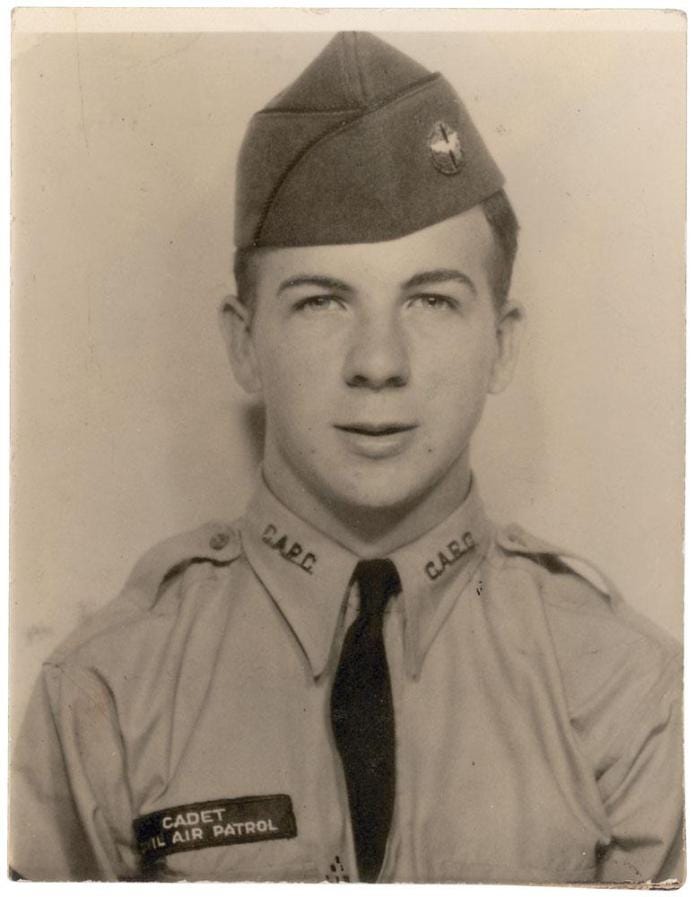
In the late 1930s, Byrd co-founded the Civil Air Patrol (CAP), an Air Force auxiliary used for covert operations. As a CAP recruit, Lee Harvey Oswald was sent to the Army Counterintelligence School in Maryland to “be taught the Russian language, Russian military tactics, Russian politics and all characteristics of the Russian people.”[14]
Byrd was close with General James Doolittle, an aviation pioneer who wrote a report on the CIA in 1954, which concluded that: “it is now clear that we are facing an implacable enemy whose avowed objective is world domination by whatever means and at whatever cost. There are no rules in such a game… If the United States is to survive, long standing concepts of ‘fair play’ must be reconsidered.”
The Doolittle Report called for more aggressive CIA covert activities that had previously been believed to be repugnant and contrary to American values.
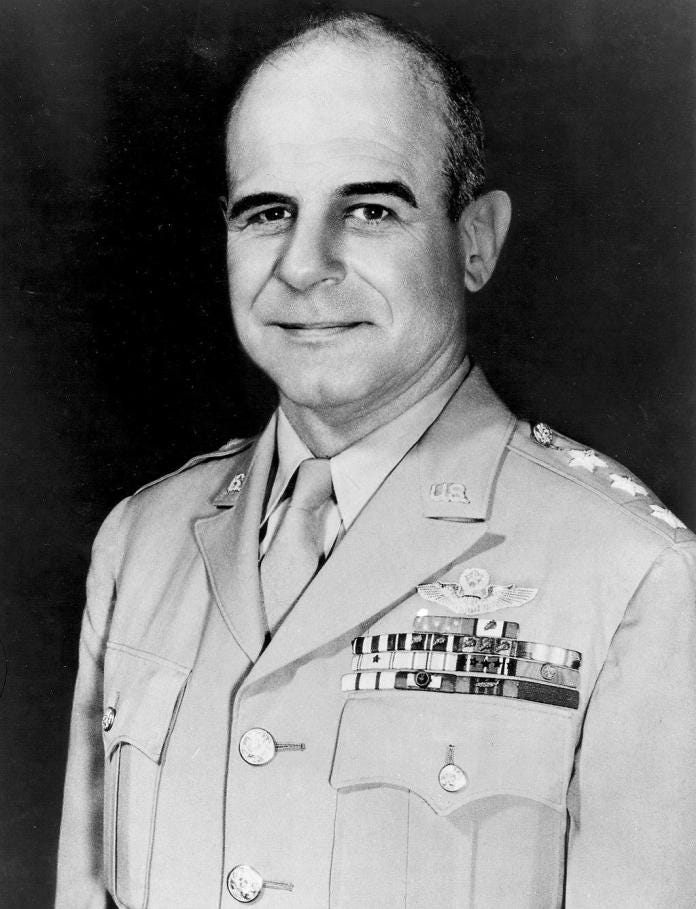
Byrd’s right-wing sensibilities were evident when he traveled to Nazi Germany several years before World War II and had a brief meeting with Hitler. When Byrd returned to the U.S. after that encounter, he spoke positively of Hitler’s “sincerity” and “basically sound policies.”
Byrd subsequently developed a close friendship with one of Heinrich Himmler’s former assassins, Werner von Alvensleben, a double agent in World War II who owned and operated the big game hunting company that Byrd allegedly traveled to Mozambique with at the time of the JFK assassination.[15]
Byrd’s memoir, amazingly, makes no mention of Kennedy or the JFK assassination.
He alludes to his friendship with LBJ, featuring a photo of him with LBJ at a University of Texas football game at the Cotton Bowl in Dallas, but barely mentions any details of their symbiotic relationship and how Johnson helped to make him rich.[16]

A CovertAction Magazine investigation detailed how LBJ was almost certainly a central figure in coordinating the JFK assassination through intermediaries such as his lawyer, Ed Clark, whom Reader’s Digest had called the “secret political boss of Texas.”
Clark privately bragged to his fellow lawyer Barr McClellan about his involvement in the JFK assassination. His motivation was that he derived a lot of his money (lucrative oil leases and large legal retainer fees) and power from his long-time association with LBJ, who awarded Clark with the ambassadorship to Australia (a key American ally during the Vietnam War).[17]
Johnson’s motive in orchestrating the plot to kill Kennedy stemmed from the fact that the Kennedys were plotting to remove Johnson as Vice President on the 1964 Democratic ticket for the election and destroy him.
The Kennedys were leaking to the media and Republicans in Congress information about Johnson’s criminal activities that could have put him in prison for the rest of his life.
Johnson had become an embarrassment because of his associations with two white-collar criminals who served as his financial bagmen—Billie Sol Estes and Bobby Baker—who were both being brought down in financial scandals and facing long prison terms.
Clayton Burkett Van Kirk, chief counsel in 1963 for the Republican minority on the Senate Rules Committee, told journalist Seymour Hersh that Attorney General Robert Kennedy was feeding damaging information on Johnson’s corruption to the Senate Rules Committee in fall 1963, in an attempt to destroy LBJ. Van Kirk told Hersh that “Bobby was feeding information to whispering Willie [nickname for Senator John Williams]. The Kennedy brothers,” Van Kirk said, were “dumping Johnson.”[18]

As part of Johnson’s inner-circle, Byrd looks to have played a pivotal role in helping to consummate the Kennedy assassination in which the TSBD was obviously critical.
Byrd also owned the Dal-Tex building adjacent to Dealy plaza where snipers allegedly shot at JFK and a radio operator connected to the mafia, Eugene Hale Brading, helped coordinate the assassination hit team. According to Sara Jordan-Heintz, Byrd had allowed the CIA and the Israeli Mossad to run ops from the Dal-Tex building and store weapons in it.[19]
Byrd was part of the so-called Suite 8F Group, a collection of right-wing businessmen who held meetings in Suite 8F of the Lamar Hotel in Houston.
Other members of this group included: George and Herman Brown, key Johnson benefactors who founded Brown & Root, a company which built military bases in Vietnam;[20] Jesse H. Jones, former chairman of the Reconstruction Finance Corporation; future Texas Governor John Connally; and Ed Clark.
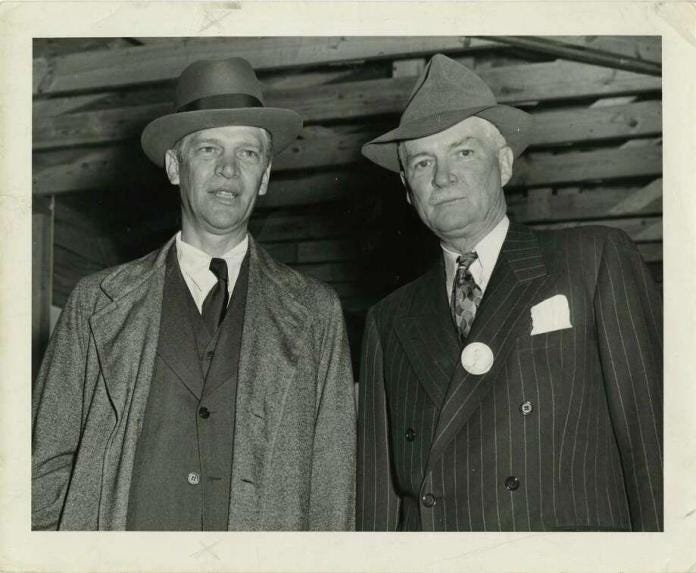

Billie Sol Estes wrote in his memoir that a slush fund of more than $1 million was raised to fund the Kennedy assassination by people affiliated with the Suite 8F Group, including Byrd, who played poker at Brownie’s Restaurant on East Grand Avenue in Dallas, a favorite gambling place of the local business elite and Dixie mafia elements since the 1940s.
The men were concerned that, if Johnson were dumped, the state of Texas would be without a power base in Washington, and the oil depletion allowance and defense contracts would be in danger.[21]
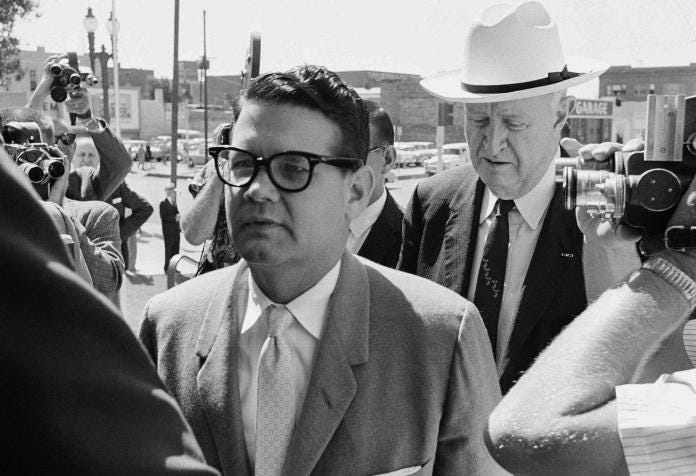
According to Spartacus Educational, a website devoted to the JFK assassination, Byrd was connected to key CIA figures linked to the JFK assassination plot through his membership in the Dallas Petroleum Club.

The figures included: George de Mohrenschildt; David Atlee Phillips, who told his brother on his deathbed that he had been in Dallas at the time of the JFK assassination (likely an admission to his involvement); and George H. W. Bush.
Researcher Richard Bartholomew has suggested that Byrd knew David Ferrie, a CIA operative prosecuted by New Orleans District Attorney Jim Garrison for his alleged involvement in the JFK plot, via the Civil Air Patrol (CAP) whose Texas wing Byrd commanded.
The stock trades carried out around the time of the JFK assassination give further weight to the belief that Byrd was involved in the assassination in some way or was aware of the plot—from which he ultimately benefited greatly.
The author wishes to thank Robert Morrow for his help in putting together this article.
David Harold “Dry Hole” Byrd, I’m an Endangered Species: The Autobiography of a Free Enterpriser (Houston, TX: Pacesetter Press, 1978), 69. LTV also produced electronics. By the fall of 1963, LTV stock was a pure play on the defense industry with its only products being airplanes and electronics. ↑
According to Peter Dale Scott (The Dallas Conspiracy), Johnson’s purchase was paid for out of the 1965 budget which had not yet been approved by Congress. ↑
Byrd, I’m an Endangered Species, 69. Byrd says he absorbed a loss of $15 million because of the antitrust litigation. ↑
Russ Baker, “JFK Assassination: 60 Years Later, Crucial Alibi Dismantled.” ↑
Baker, “JFK Assassination: 60 Years Later, Crucial Alibi Dismantled.” ↑
Baker, “JFK Assassination: 60 Years Later, Crucial Alibi Dismantled,” WhoWhatWhy.org, November 15, 2023. In November, temperatures in Mozambique reached 117 degrees Fahrenheit and was not a time foreigners took safaris. The man Byrd allegedly went with, who painted Byrd’s name on elephants, did not exist. ↑
Mack Royal, the son of legendary University of Texas football coach Darrell Royal (UT head coach 1957-1976; two national championships), who was very close with Johnson, recounted an incident where Byrd landed the plane at the LBJ ranch when he and his wife were visiting over his and Johnson’s objections (Johnson was then president and had told Byrd he had company over and was busy). See Mack Royal, Fourteen Years on Fnord-L (Austin, TX: Bozo Texino Press, 2010). ↑
Various sources identify Wallace’s fingerprints as being in the sniper’s nest at the TBSD on the day of the JFK assassination and believe that he was a substitute for Oswald as a shooter. ↑
See Alden Hatch, The Byrds of Virginia: An American Dynasty, 1670 to the Present (New York: Holt, Rinehart and Winston, 1969). ↑
Byrd, I’m an Endangered Species, 1, 2, 91. Byrd founded Byrd-Frost, Inc., in 1931; it was eventually bought out by Mobil (now ExxonMobil). He used his oil profits to build a financial empire that included recreational facilities, manufacturing, real estate, commercial and industrial ventures and farming and ranching enterprises. At the end of his memoir, Byrd attacked the Carter administration from a right-wing perspective, stating that “we have elected an administration and a Congress that seem hell-bent on throwing the fight [in the Cold War] to the socialist side.” (p. 86) Byrd at the same time expressed great admiration for conservative economist Milton Friedman. ↑
Sara Jordan-Heintz, The Incredible Life and Mysterious Death of Dorothy Kilgallen (Page Turner Books International, 2023), 285. ↑
In 1995, E-Systems, which produced reconnaissance gear used in spy planes and computer technology that could process enhance and compare spy satellite photos, was bought by the giant Massachusetts-based defense contractor, Raytheon. For years, its Board of Directors included Admiral William F. Raborn, CIA Director under Lyndon B. Johnson. For years, the head of E-Systems research division was Lloyd K. Lauderdale, another former high-ranking CIA official. Peter Marino, a sixteen year CIA veteran was chief of one of the company’s other divisions. ↑
John Mintz, “The Secrets Out: Covert E-Systems Inc. Covets Commercial Sales,” The Washington Post, October 23, 1994. Dan Alcorn, “Talk at the JFK Assassination at 60 conference,” Cyril H. Wecht Institute of Forensic Science and Law, Duquesne University, November 2023 referred to Mintz’ article. E-Systems built the E-4B, nicknamed the “Doomsday Plane,” an airborne command post for the White House and Pentagon in a nuclear attack. It had a miles-long trailing antenna to communicate with the U.S. submarine fleet. ↑
Baker, “JFK Assassination: 60 Years Later, Crucial Alibi Dismantled.” Oswald was a Soviet/Russian defector. ↑
Byrd was also friends with Ernest Udet, the #2 man at the German Nazi Luftwaffe appointed by Herman Goering. Udet was in charge of research and development for the Luftwaffe dive-bomber that was used in the London blitzkrieg. ↑
Byrd makes it seem that President Johnson was unwilling to assist his business enterprises. He describes going to see him at his ranch when he was president to try to gain his support for an investment in Mexico, but says that Johnson told him that there was no way the president of the U.S. could intervene in a private dispute. Byrd, I’m an Endangered Species, 67. ↑
See Barr McClellan, Blood, Money, & Power: How L.B.J. Killed J.F.K. (New York: Skyhorse, 2011). ↑
James Wagenvoord, the editorial business manager and assistant to Life magazine’s Executive Editor in 1963, said that his magazine was creating a three-part exposé set to be published, beginning in the December 6th issue focusing on Johnson’s relationship with Bobby Baker, the intention of which was to end “Johnson’s political career, and possibly send him to prison.” ↑
Jordan-Heintz, The Incredible Life and Mysterious Death of Dorothy Kilgallen, 284. According to Jordan-Heintz, Eugene Hale Brading was a mafia courier with a long rap sheet going back to the 1930s who was apprehended by deputy sheriffs in the Dal-Tex building after the JFK assassination. Though he was a two-bit hood, in February 1964, Brading suddenly came into considerable money, helping to fund a well known country club near San Clemente, California. In 1968, Brading was interviewed by the Los Angeles Police Department because of his presence in L.A. near where Robert Kennedy was murdered. ↑
The consortium of which Brown & Root was part received more than $2 billion in government contracts during the Vietnam War. On the symbiotic relationship between Johnson and George and Herman Brown, see Robert A. Caro, The Years of Lyndon Johnson: The Path to Power (New York: Vintage, 1990). Brown’s college roommate, Albert Thomas, was a Texas congressman who was photographed winking at LBJ when LBJ was being sworn in as president on Air Force One after JFK’s assassination. ↑
Billie Sol Estes, Billie Sol Estes: A Texas Legend (Granbury, TX: BS Productions, 2005), 146, 147. ↑











Truly superb and comprehensive explanation of many of Byrd's known connections to the 1963 coup punctuated by the article's new added post-assassination stock purchases revealed here and by Baker's article on the debunking of Byrd's assassination alibi.